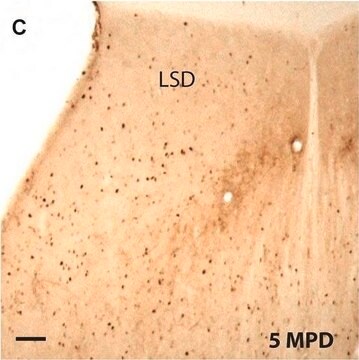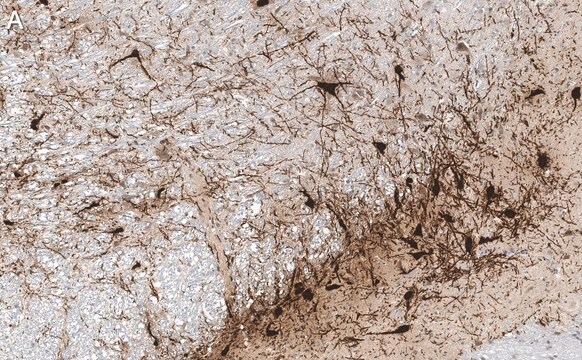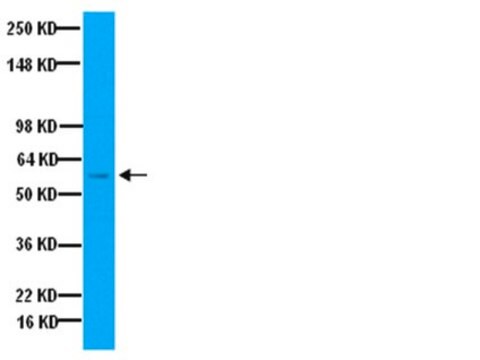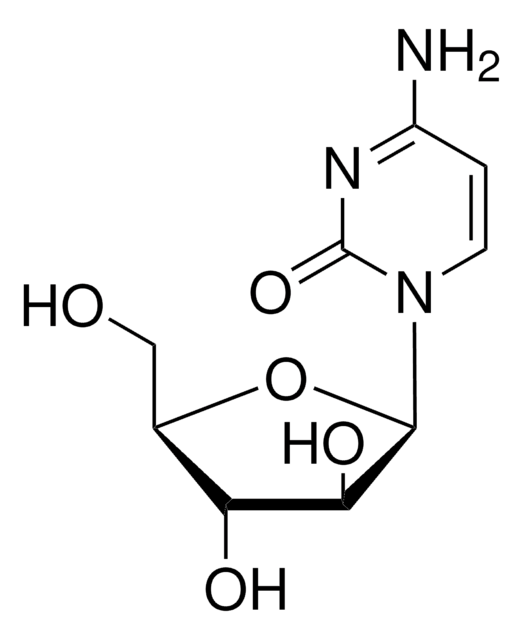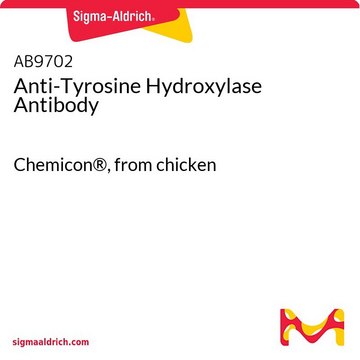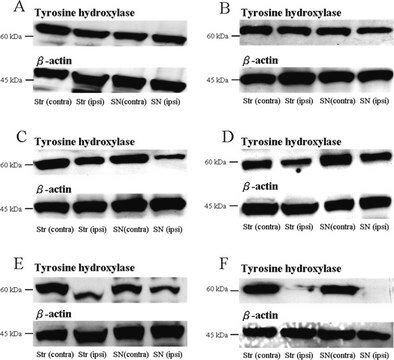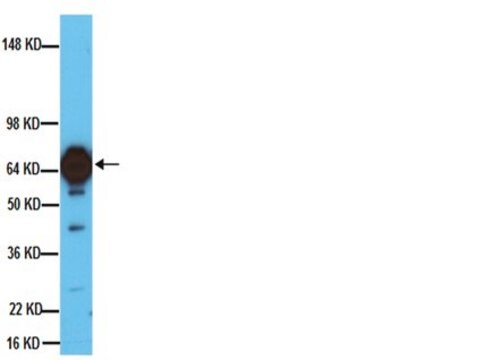T1299
Anti-Tyrosine Hydroxylase Antibody
mouse monoclonal, TH-2
Synonyme(s) :
Anti-Tyrosine Hydroxylase, Mouse Anti-Tyrosine Hydroxylase, Tyrosine Hydroxylase Detection
About This Item
Produits recommandés
Nom du produit
Monoclonal Anti-Tyrosine Hydroxylase antibody produced in mouse, clone TH-2, ascites fluid
Source biologique
mouse
Niveau de qualité
Conjugué
unconjugated
Forme d'anticorps
ascites fluid
Type de produit anticorps
primary antibodies
Clone
TH-2, monoclonal
Contient
15 mM sodium azide
Espèces réactives
human, monkey, guinea pig, rat, sheep, bovine, rabbit
Technique(s)
immunohistochemistry: suitable
immunoprecipitation (IP): suitable using native or SDS-denatured TH.
western blot: 1:10,000 using extracts of cultured rat adrenal pheochromocytoma (PC12) cells.
Isotype
IgG1
Numéro d'accès UniProt
Conditions d'expédition
dry ice
Température de stockage
−20°C
Modification post-traductionnelle de la cible
unmodified
Catégories apparentées
Description générale
Spécificité
Immunogène
Application
- western blotting
- indirect immunofluorescence
- immunostaining
- immunohistochemistry
- enzyme linked immunosorbent assay (ELISA)
- dot blot
- immunoprecipitation
Actions biochimiques/physiologiques
Clause de non-responsabilité
Vous ne trouvez pas le bon produit ?
Essayez notre Outil de sélection de produits.
En option
Code de la classe de stockage
10 - Combustible liquids
Classe de danger pour l'eau (WGK)
WGK 3
Point d'éclair (°F)
Not applicable
Point d'éclair (°C)
Not applicable
Faites votre choix parmi les versions les plus récentes :
Déjà en possession de ce produit ?
Retrouvez la documentation relative aux produits que vous avez récemment achetés dans la Bibliothèque de documents.
Les clients ont également consulté
Notre équipe de scientifiques dispose d'une expérience dans tous les secteurs de la recherche, notamment en sciences de la vie, science des matériaux, synthèse chimique, chromatographie, analyse et dans de nombreux autres domaines..
Contacter notre Service technique
